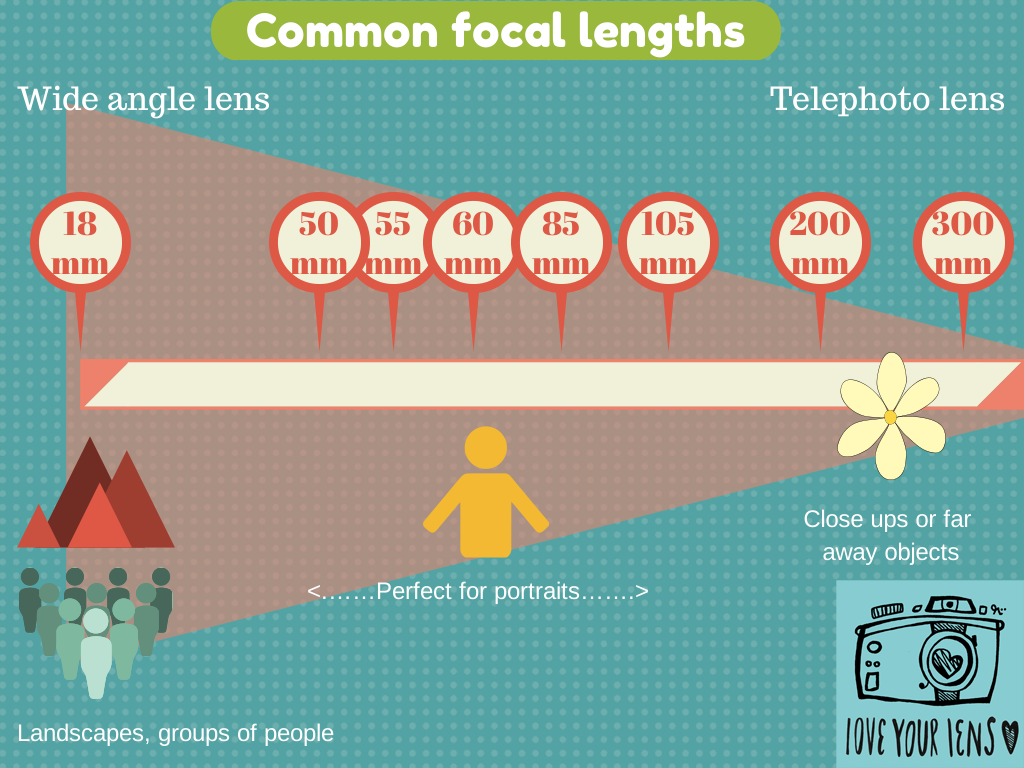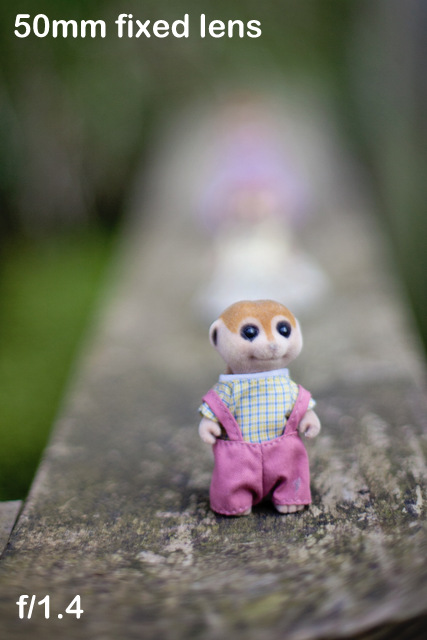In Part 1 we looked at how Aperture plays a big role in how to get blurred backgrounds in photos. Low f/numbers (large apertures) give us a narrow depth of field and high f/numbers result in a wider depth of field. This sounds pretty straight forward, but like lots of techie things it’s not quite the full story. There are two other factors that come into play: Focal Length and Distance (you to your subject). In this part we are going to look at how focal length affects depth of field.
2. Focal lengths
In our last shots of the meerkat family the backgrounds were not blurred to the same extent, despite the fact that the lowest aperture available had been used in each case.
Here’s another example, where using the same lens and same aperture of f/16 we have a very different depth of field. At f/16 you would expect everything to be more or less in focus but in the shot on the right that’s not the case.
The factor that is making the big difference in the depth of field is the Focal Length. Before we go any further let’s take a quick look at what this is.
Focal length is the field of view of the lens – how wide or narrow it is – and how far it zooms.
Focal lengths are expressed in mm – a low number is a wide view and a high number is a narrower view and also shows how far the lens zooms.
A typical kit lens (starter lens comes with your SLR) is 18-55mm. This is a very limited zoom and will not allow you to shoot things in the distance. A lens that has a top focal length of 200mm or 300mm is perfect for that as it zooms much further.
This chart shows some of the popular focal lengths and what they are suitable for.
The more you zoom with a zoom lens, the more the background blurs. So the longer the focal length, the more background blur you get. And this will happen in the Automatic modes on your camera – you don’t have to be in the aperture mode. The blurring is just a result of the optics in the lens and the way that zoom lenses compress perspective – making objectives appear closer together than they actually are. You can see this in the shot of the meerkats at 300mm focal length. Look how far apart they actually are.
So, what we now know is that it’s a combination of Focal Length and Aperture that affect Depth of Field. Let’s go back to our kit lens for a moment. That usually has a focal length of 18-55mm. When you use a short focal length (wide view) like 18mm, you may struggle to get a blurred background, even with a low aperture. And the 18-55mm kit lens doesn’t zoom very far, so there’s a limit to the amount of blur you can get with this lens. I’m often asked how i achieve the extreme blur that I get in some of my images. The answer is that I’ve bought a lens with a really low aperture of f/1.4. It’s a 50mm fixed lens (it doesn’t zoom at all) and it’s fabulous for portraits and anything where I want really narrow depth of field like this one.
Prime (fixed) lenses with low apertures like this are amazing at blurring the background, especially when you get really close up like this. But you will find that as you back away further from your subject the amount of blur reduces. With a fixed lens and a very low aperture like f/1.4 you will still see a lot of blurring, but it can be a different story with other lenses. This is often where people go wrong when trying to reduce the depth of field – they are unaware that Distance also plays an important role. This is what will be covered in tomorrow’s final instalment.
Did you like this blog post or find it useful? If so, please leave a comment, sign up for email reminders at the top of the page or share it with your friends (or even better, all three!!). Thank you – Jane ![]()









Thank you Jane for this brilliant, easy to access, ‘idiots guide’ to focal length. I thought I understood from my A level Physics but have not got my head round what the visual effects on photos can be.
I need to go off and play!
Glad it all made sense! Thanks for taking the time to leave comments 🙂